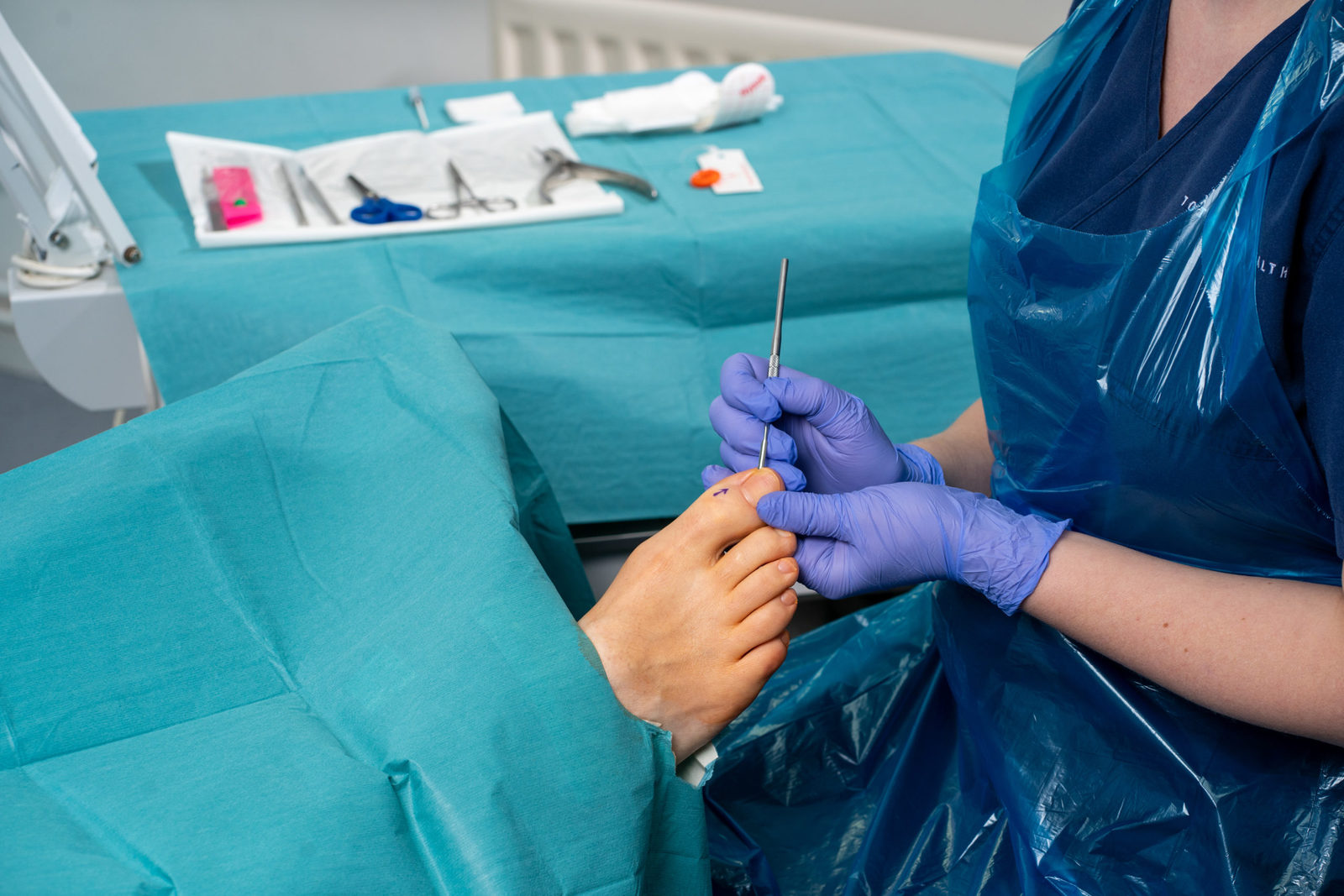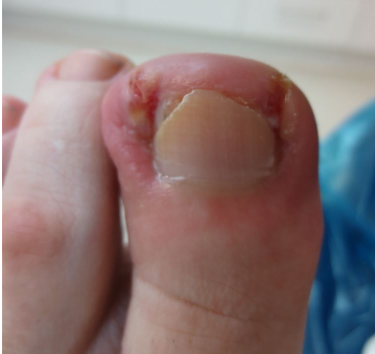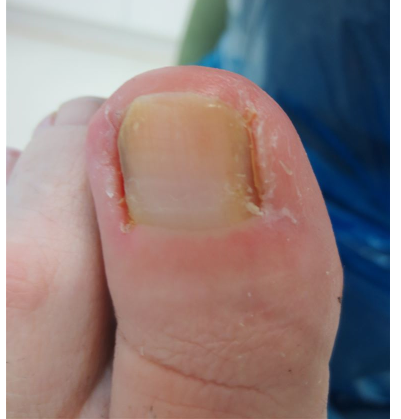Ingrown toenail
What is an Ingrown Toenail?
An ingrown Toenail is a common condition in which the corner or side of a toenail grows into the soft flesh. This is a painful condition producing redness, swelling and sometimes an infection too. There are two types of ingrown toenail:
ACUTE – where a piece of nail actually pierces the skin, often resulting in infection and overgrowth of reactive tissue.
CHRONIC – where the nail shape gradually changes over the years, often associated with thickening. The nail edges tend to press into the soft tissue causing pain even with the lightest of pressures. This tends to be seen more from the age of 40 or so and need not be associated with trauma.
Why have I developed an Ingrown Toenail?
There are a number of reasons why you have developed an ingrown nail. They are most commonly caused by cutting your toenails too short or rounding the nail edges. Equally, wearing ill-fitting shoes or tight hosiery that press the nail into your toe can also cause this condition. Additionally, you can develop an ingrown nail after an injury, such as stubbing your toe.
How can you treat an Ingrown Toenail?
The podiatrists at Total Foot Health are expert in dealing with this condition in a sympathetic and pain free manner. Treatments may be as simple as advice and help on toenail care or may require more complex intervention such as a partial nail ablation or surgical nail edge excision.
A partial nail ablation (PNA) with matrix phenolisation has a success rate of about 95%.
Frequently Asked Questions: Ingrown Toenails
What is an ingrown toenail?
An ingrown toenail occurs when the edge or corner of the nail grows into the surrounding skin. It causes pain, redness, swelling, and sometimes infection.
What are the types of ingrown toenail?
Acute: The nail pierces the skin, often leading to infection and reactive tissue growth.
Chronic: The nail gradually thickens and curves into the skin over time, typically seen from age 40 onward and not always linked to trauma.
What causes ingrown toenails?
Common causes include cutting nails too short or rounding the corners, wearing tight shoes or hosiery, and toe injuries such as stubbing.
Can I treat an ingrown toenail at home?
Minor cases may benefit from warm salt soaks and gentle nail care, but infected or painful nails should be treated by a podiatrist to avoid complications.
How does Total Foot Health treat ingrown toenails?
We begin with a full assessment and can offer pain-free nail care advice, conservative treatment, or surgical solutions such as Partial Nail Ablation (PNA) with matrix phenolisation – which has a 95% success rate.
Is the treatment painful?
No. Our podiatrists perform treatments under local anaesthetic where required, making the process comfortable and stress-free.
Home Care vs Professional Treatment for Ingrown Toenails
| Treatment Method | At-Home Care | Podiatrist Treatment (TFH) |
|---|---|---|
| Soaking & basic cleaning | ✔ | ✔ (as part of overall care) |
| Antibiotics (for infection) | ✘ | ✔ (GP or podiatrist referral) |
| Conservative nail trimming | ✔ (if not infected) | ✔ (performed professionally) |
| Partial Nail Ablation (PNA) | ✘ | ✔ (95% success rate) |
| Pain-free removal under anaesthetic | ✘ | ✔ |
| Prevention & footwear advice | ✔ (with research) | ✔ (tailored to your needs) |



